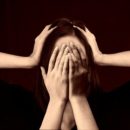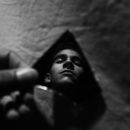HOCD: Homosexual OCD & Sexual Orientation OCD
Fear of Being Gay (Homosexual OCD / HOCD) Emerging sexuality can be confusing for any teen or young adult, and gay teens face a variety of unique challenges over the course of adolescence. In addition to learning to understand their own sexuality, gay teens must navigate complex situations and pressures that may not be relevant for straight teens. They must also deal with opinionated parents, friends, and others who sometimes hold differing views about sexuality. Anxiety, distress, and confusion are often part of this process. This post is not about the anxiety associated with being gay or with “coming out” but instead discusses homosexual OCD (“HOCD”), an anxiety disorder that affects a small number of individuals. HOCD is not unique to teens but can occur at any age. What is HOCD? Homosexual OCD (“HOCD”) is a specific subtype of...
Read MoreSexual Obsessions in OCD (Obsessive-Compulsive Disorder)
Sexual obsessions in OCD are recurrent unwanted sexual thoughts, such as the fear of being attracted to something unwanted, taboo, or morally “unacceptable” based on one’s particular worldview. Although all forms of OCD can be debilitating, sexual obsessions can be especially confusing and disabling for sufferers because sexual obsessions target one’s fundamental identity as a social being. In addition to anxiety, which characterizes most obsessions, individuals with sexual obsessions often experience extreme guilt, shame, hopelessness, and depression. Individuals with OCD with sexual symptoms often mistakenly consider themselves deviant, disgusting, or evil. Moreover, incorrect assumptions about the true causes of their unwanted sexual thoughts make them less likely to seek treatment or to share their symptoms with others. In my Palm Beach County, South Florida psychological practice, I treat many individuals who have lived with sexual obsessions for many years...
Read MoreBody Dysmorphic Disorder (BDD) Symptoms
Symptoms of Body Dysmorphic Disorder (BDD) Body dysmorphic disorder (BDD) is a somatoform disorder that closely resembles obsessive-compulsive disorder (OCD). Symptoms of body dysmorphic disorder include excessive concern about perceived physical flaws, defects, or imperfections. Individuals with body dysmorphic disorder become obsessed with these unwanted aspects of their appearance and perform a variety of rituals and avoidance behaviors in order to disguise or conceal these “flaws.” BDD symptoms typically result in extreme distress and a variety of social and occupational difficulties. Body dysmorphic disorder symptom areas vary between individuals and commonly focus on the skin, hair, weight, and specific facial features, such as the nose (Philips, 2005). In The Broken Mirror (2005), Dr. Philips breaks down the frequency of different types of BDD concerns: Skin 73% Genitals 8% Hair 56% Cheeks/cheekbones 8% Weight 55% Calves 8% Nose 37% Height...
Read MoreBody Dysmorphic Disorder (BDD)
What is Body Dysmorphic Disorder (BDD)? Body dysmorphic disorder (BDD) is not formally classified as an anxiety disorder; however, it shares many overlapping features with anxiety disorders like obsessive-compulsive disorder (OCD). In contrast to OCD which typically focuses on specific external feared outcomes, body dysmorphic disorder involves hyper-attention to one or more perceived bodily defects, imperfections, or flaws. BDD “flaws” are experienced as distressing and intolerable. In some cases, the imperfections that bother individuals with body dysmorphic disorder can be perceived by other people, but BDD magnifies and distorts these imperfections in the eyes of the sufferer. In other cases, individuals with BDD notice and attend to “flaws” that cannot be readily perceived by others. Regardless of the form of one’s symptoms, body dysmorphic disorder is associated with extreme distress and shame. Moreover, because BDD-related “flaws” are often perceived as being...
Read MoreHit-and-Run OCD
“Hit and run” OCD involves the fear of accidentally hitting a pedestrian while driving. In most cases of hit-and-run obsessive-compulsive disorder, fears focus on unintentionally killing, injuring, or maiming a victim. Other individuals worry about causing car accidents or causing other vehicles to swerve and hit pedestrians. Fear of Driving Hit-and-run OCD, or motor vehicle accident OCD, is distinct from other syndromes that involve anxiety about driving or the fear of car accidents. Hit and run OCD differs from panic– or agoraphobia-related driving avoidance, in which individuals fear driving due to the possibility of having a panic attack while in the car. Diagnosis of hit and run OCD is slightly more complicated in cases in which one fears “losing control” while driving, as this symptom can reflect either panic or OCD. In the case of panic, this fear is...
Read More







